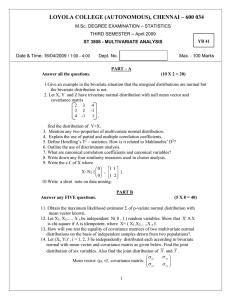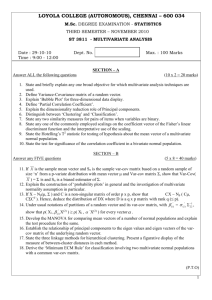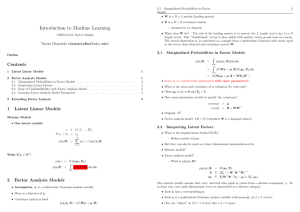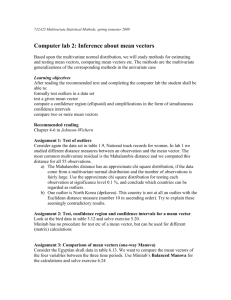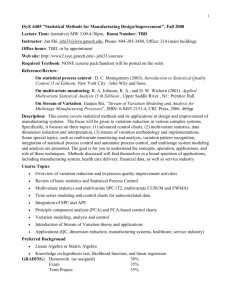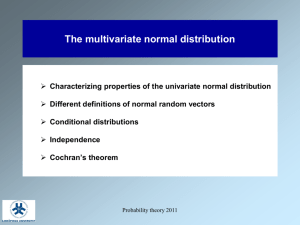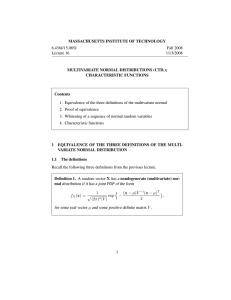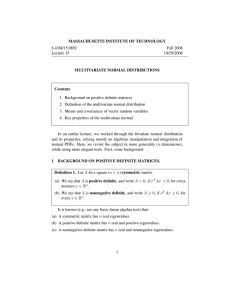smfmockexam.tex SMF MOCK EXAMINATION. 18.2.2011 Q1. (i
advertisement
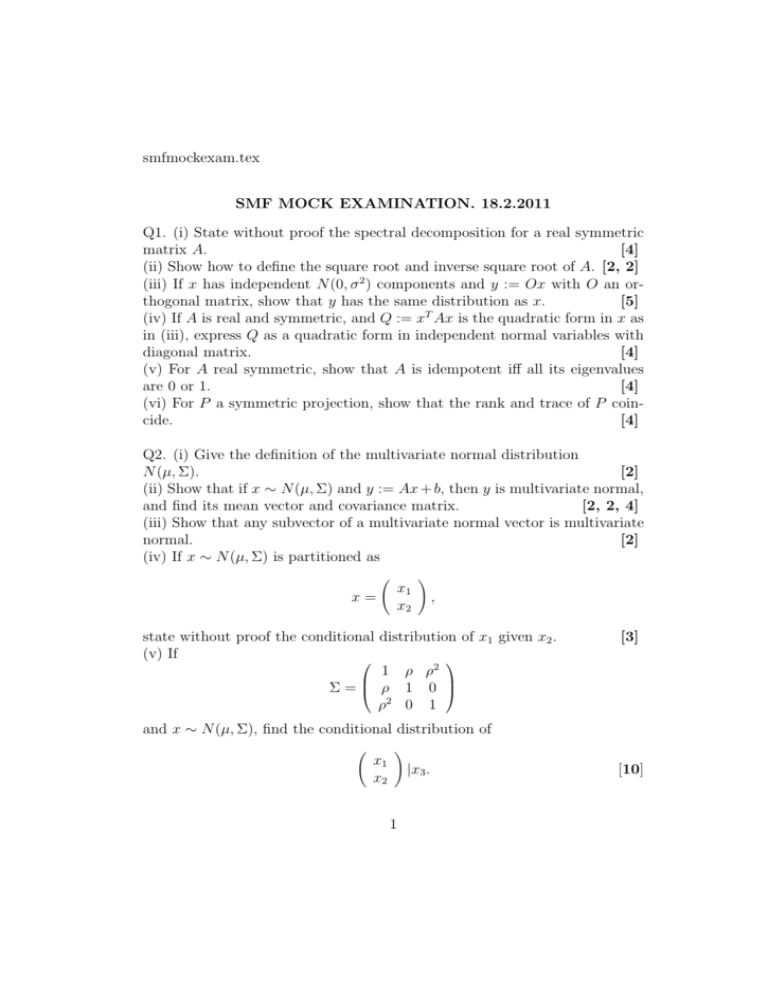
smfmockexam.tex SMF MOCK EXAMINATION. 18.2.2011 Q1. (i) State without proof the spectral decomposition for a real symmetric matrix A. [4] (ii) Show how to define the square root and inverse square root of A. [2, 2] (iii) If x has independent N (0, σ 2 ) components and y := Ox with O an orthogonal matrix, show that y has the same distribution as x. [5] T (iv) If A is real and symmetric, and Q := x Ax is the quadratic form in x as in (iii), express Q as a quadratic form in independent normal variables with diagonal matrix. [4] (v) For A real symmetric, show that A is idempotent iff all its eigenvalues are 0 or 1. [4] (vi) For P a symmetric projection, show that the rank and trace of P coincide. [4] Q2. (i) Give the definition of the multivariate normal distribution N (µ, Σ). [2] (ii) Show that if x ∼ N (µ, Σ) and y := Ax + b, then y is multivariate normal, and find its mean vector and covariance matrix. [2, 2, 4] (iii) Show that any subvector of a multivariate normal vector is multivariate normal. [2] (iv) If x ∼ N (µ, Σ) is partitioned as ( x= x1 x2 ) , state without proof the conditional distribution of x1 given x2 . (v) If 1 ρ ρ2 Σ= ρ 1 0 ρ2 0 1 [3] and x ∼ N (µ, Σ), find the conditional distribution of ( x1 x2 ) |x3 . 1 [10] Q3. (i) If X = (Xt ) is L1 -bounded, i.e. ∥X∥1 := supt E[|Xt |] < ∞, and ∑ ∑ ψ = (ψj ) ∈ ℓ1 (i.e. ∥ψ∥1 = j |ψj | < ∞), show that j ψj Xt−j converges a.s. and in ℓ1 . [5, 5] (ii) Show that ℓ1 ⊂ ℓ2 . [5] (iii) If also X is L2 -bounded, i.e. ∥X∥2 := supt E[|Xt |2 ] < ∞, show that ∑ [10] j ψj Xt−j also converges in ℓ2 , to the same sum. Q4. Describe briefly, without proofs, the method of principal components analysis. [6] Discuss the advantages and disadvantages of working with covariances and with correlations. [6] Give examples, in the financial area, where each might be appropriate. [13] Q5. (i) Show that 1 ρ ρ Σ = ρ 1 ρ , ρ ρ 1 where the parameter ρ is a correlation, has eigenvalues 1 + 2ρ (simple) and (1 − 2ρ) (double), with eigenvectors 1 1 , 1 −1 0 , 1 −1 1 . 0 [4] (ii) Deduce that this matrix can only be a correlation matrix under a restriction on ρ. Find this restriction, and the further restriction that Σ be non-singular. [4, 4] (iii) If xi ∼ N (µ, Σ) and the vector y has coordinates y1 := x1 + x2 , y2 := x2 + x3 , find the mean vector and covariance matrix of y. [4, 9] N. H. Bingham 2
